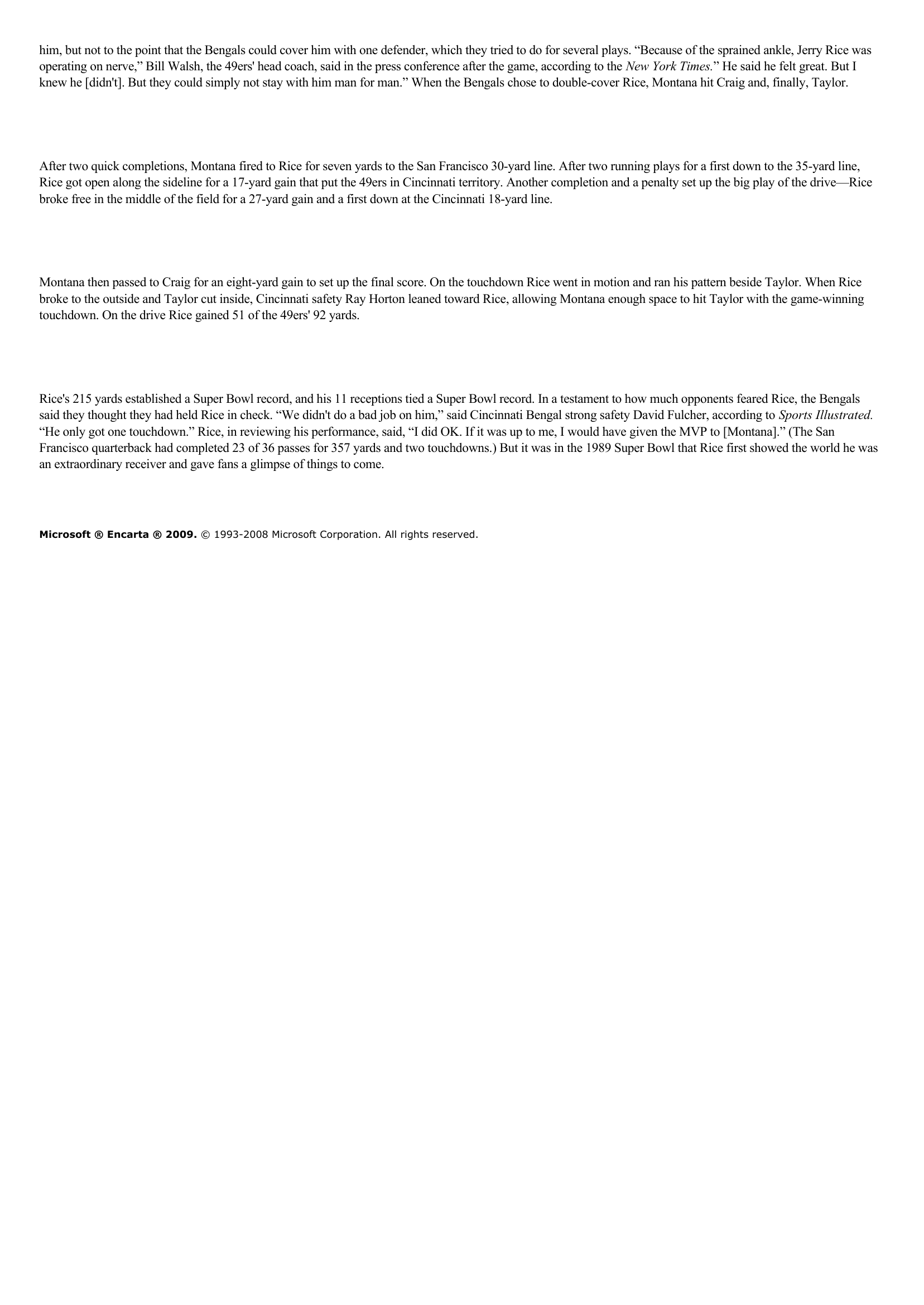Rice Wins MVP.
Publié le 14/05/2013

Extrait du document
«
him, but not to the point that the Bengals could cover him with one defender, which they tried to do for several plays.
“Because of the sprained ankle, Jerry Rice wasoperating on nerve,” Bill Walsh, the 49ers' head coach, said in the press conference after the game, according to the New York Times. ” He said he felt great.
But I knew he [didn't].
But they could simply not stay with him man for man.” When the Bengals chose to double-cover Rice, Montana hit Craig and, finally, Taylor.
After two quick completions, Montana fired to Rice for seven yards to the San Francisco 30-yard line.
After two running plays for a first down to the 35-yard line,Rice got open along the sideline for a 17-yard gain that put the 49ers in Cincinnati territory.
Another completion and a penalty set up the big play of the drive—Ricebroke free in the middle of the field for a 27-yard gain and a first down at the Cincinnati 18-yard line.
Montana then passed to Craig for an eight-yard gain to set up the final score.
On the touchdown Rice went in motion and ran his pattern beside Taylor.
When Ricebroke to the outside and Taylor cut inside, Cincinnati safety Ray Horton leaned toward Rice, allowing Montana enough space to hit Taylor with the game-winningtouchdown.
On the drive Rice gained 51 of the 49ers' 92 yards.
Rice's 215 yards established a Super Bowl record, and his 11 receptions tied a Super Bowl record.
In a testament to how much opponents feared Rice, the Bengalssaid they thought they had held Rice in check.
“We didn't do a bad job on him,” said Cincinnati Bengal strong safety David Fulcher, according to Sports Illustrated. “He only got one touchdown.” Rice, in reviewing his performance, said, “I did OK.
If it was up to me, I would have given the MVP to [Montana].” (The SanFrancisco quarterback had completed 23 of 36 passes for 357 yards and two touchdowns.) But it was in the 1989 Super Bowl that Rice first showed the world he wasan extraordinary receiver and gave fans a glimpse of things to come.
Microsoft ® Encarta ® 2009. © 1993-2008 Microsoft Corporation.
All rights reserved..
»
↓↓↓ APERÇU DU DOCUMENT ↓↓↓
Liens utiles
- Rice, Condoleezza - biographie.
- Burroughs Edgar Rice, 1875-1950, né à Chicago, écrivain américain.
- Oerter Wins Third Gold Medal.
- Owens Wins Four Gold Medals.
- South Africa Wins Rugby World Cup.










